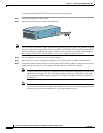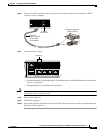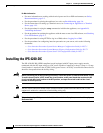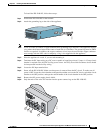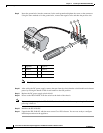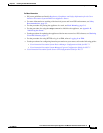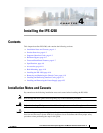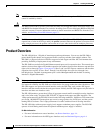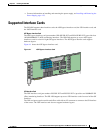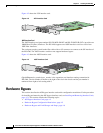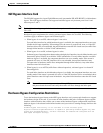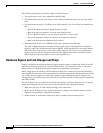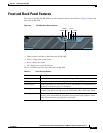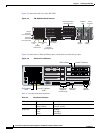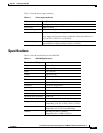
4-2
Cisco Intrusion Prevention System Appliance and Module Installation Guide for IPS 7.1
OL-24002-01
Chapter 4 Installing the IPS 4260
Product Overview
Note
In IPS 7.1, rx/tx flow control is disabled on the IPS 4260. This is a change from IPS 7.0 where rx/tx flow
control is enabled by default.
Caution
The BIOS on IPS 4260 is specific to IPS 4260 and must only be upgraded under instructions from Cisco
with BIOS files obtained from the Cisco website. Installing a non-Cisco or third-party BIOS on IPS 4260
voids the warranty. For more information on how to obtain instructions and BIOS files from the Cisco
website, see Obtaining Cisco IPS Software, page C-1.
Note
On IPS sensors with multiple processors (for example, the IPS 4260 and IPS 4270-20), packets may be
captured out of order in the IP logs and by the packet command. Because the packets are not processed
using a single processor, the packets can become out of sync when received from multiple processors.
Product Overview
The IPS 4260 delivers 1 Gigabit of intrusion prevention performance. You can use the IPS 4260 to
protect both Gigabit subnets and aggregated traffic traversing switches from multiple subnets. The
IPS 4260 is a purpose-built device that has support for both copper and fiber NIC environments thus
providing flexibility of deployment in any environment.
The IPS 4260 has two built-in Gigabit Ethernet network ports and six expansion slots. The network port
numbers increase from right to left and the expansion slot numbers increase from bottom to top and from
right to left as shown in Figure 4-5 on page 4-8. Slots 2 and 3 are PCI-Express connectors and the other
expansion slots are PCI-X slots. Slots 1 through 3 are full-height slots and slots 4 though 6 are
half-height slots. The built-in management port is called Management0/0 and the built-in sensing
interface is Gigabit-Ethernet0/1.
Note
Only expansion slots 2 and 3 are supported at this time.
For improved reliability, the IPS 4260 uses a flash device for storage rather than a hard-disk drive. THe
IPS 4260 supports two optional network interface cards, the 2SX Fiber card, and the 4GE bypass
interface card that contains the hardware-bypass feature. Initially the IPS 4260 supports only the built-in
interfaces and these two interface cards.
The IPS 4260 monitors greater than 1 Gbps of aggregate network traffic on multiple sensing interfaces
and is also inline ready. It replaces IDS-4250-XL. It supports both copper and fiber interfaces. The
1-Gbps performance for the IPS 4260 is based on the following conditions: 10,000 new TCP connections
per second, 100,000 HTTP transactions per second, average packet size of 450 bytes, and the system
running IPS 6.0 software. The 1-Gbps performance is traffic combined from all sensing interfaces.
The IPS 4260 ships with one power supply, but it supports redundant power supplies. The IPS 4260
operates in load-sharing mode when the optional redundant power supply is installed.
For More Information
•
For more information on sensor interfaces, see Sensor Interfaces, page 1-4.
•
For more information on the 4GE bypass interface card, see Hardware Bypass, page 4-4.



